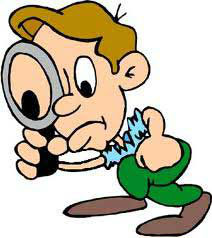I really don't find the humor in making fun of peo
Post# of 7153

What Are Learning Disabilities?
Written by NCLD Editorial Team
29 Comments
Page 1 of 3
What Are Learning Disabilities - Learning DifficultiesLearning disabilities (LDs) are real. They affect the brain's ability to receive, process, store, respond to and communicate information. LDs are actually a group of disorders, not a single disorder.
Learning disabilities are not the same as intellectual disabilities (formerly known as mental retardation), sensory impairments (vision or hearing) or autism spectrum disorders. People with LD are of average or above-average intelligence but still struggle to acquireskills that impact their performance in school, at home, in the community and in the workplace. Learning disabilities are lifelong, and the sooner they are recognized and identified, the sooner steps can be taken to circumvent or overcome the challenges they present.
How Can You Tell If Someone Has a Learning Disability?
The hallmark sign of a learning disability is a distinct and unexplained gap between a person's level of expected achievement and their performance. Learning disabilities affect every person differentlyand they present differently at various stages of development. LDs can range from mild to severe and it is not uncommon for people to have more than one learning disability. In addition, about one-third of individuals with LD also have Attention-Deficit/Hyperactivity Disorder (ADHD). While LD and ADHD can share common features, such as difficulties with concentration, memory, and organizational skills, they are not the same types of disorder. Unfortunately, LD is often confused with ADHD and is frequently mistaken as laziness or associated with disorders of emotion and behavior. A careful and thorough review of concerns, with input from multiple sources (including parents, educators, physicians, psychologists, speech-language providers and, of course, the person themselves) is the only way to rule in or rule out a learning disability.
Learning disabilities can affect a person’s ability in the areas of
Listening
Speaking
Reading
Writing
Spelling
Reasoning
Mathematics
See the chart below for specific types of learning disabilities and related disorders.
LD Terminology
Disability
Area of difficulty
Symptoms include trouble with
Example
Dyslexia
Processing language
Reading
Writing
Spelling
Confusing letter names and sounds, difficulties blending sounds into words, slow rate of reading, trouble remembering after reading text
Dyscalculia
Math skills
Computation
Remembering math facts
Concepts of time and money
Difficulty learning to count by 2s, 3s, 4s, poor mental math skills, problems with spatial directions
Dysgraphia
Written expression
Handwriting
Spelling
Composition
Illegible handwriting, difficulty organizing ideas for writing
Dyspraxia
Fine motor skills
Coordination
Manual dexterity
Trouble with scissors, buttons, drawing
Information Processing Disorders
Auditory Processing Disorder
Interpreting auditory information
Language development
Reading
Difficulty anticipating how a speaker will end a sentence
Visual Processing Disorder
Interpreting visual information
Reading
Writing
Math
Difficulty distinguishing letters like “h” and “n”
Other Related Disorders
Attention-Deficit/ Hyperactivity Disorder (ADHD)
Concentration and focus
Over-activity
Distractibility
Impulsivity
Can't sit still, loses interest quickly, daydream
 (0)
(0) (0)
(0)Prospect Ventures, Inc. (IVAP) Stock Research Links
NASDAQ DIP and RIP
Here is the best word that describes what i do here.
Intuitive;
means having the ability to understand or know something without any direct evidence or reasoning process.
I was born with it, I'm truly blessed!
Alway's searching for winners'
